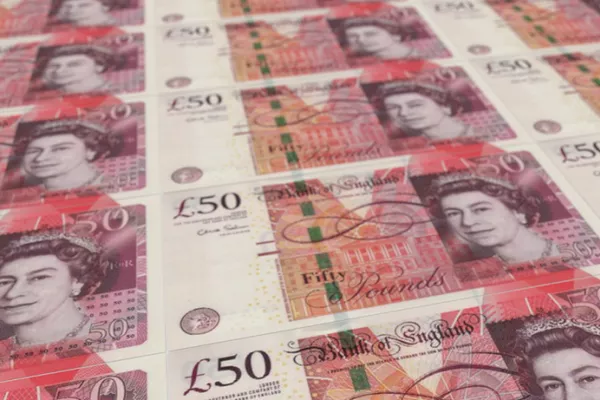The Pound to US Dollar (GBP/USD) exchange rate experienced a decline during Thursday’s European afternoon, driven by newly released US GDP data showcasing an unexpected expansion in the fourth quarter of 2023. This surge in the US economy exceeded initial forecasts, subsequently diminishing the Pound’s (GBP) strength as investors grappled with a disappointing UK retail release.
As of the latest update, GBP/USD is trading at $1.2686, marking a nearly 0.5% decrease over the past 24 hours.
US Dollar Strengthens on Impressive GDP Results
The US Dollar (USD) demonstrated strength against its counterparts on Thursday, buoyed by the latest GDP data that exceeded expectations. The US economy saw a 3.3% expansion in the last quarter, surpassing the anticipated 2%, signaling robust economic growth and fueling expectations of a more hawkish stance from the Federal Reserve in the upcoming week.
While the growth rate dipped from the previous quarter’s 4.9%, investors remained optimistic. The US Bureau of Economic Analysis (BEA) attributed the increase in real GDP to rises in various sectors, including consumer spending, exports, government spending, and private investments.
The somewhat flat reading for durable goods in December, lower than the expected 1.1%, contributed to a minor cap on USD gains. Analysts from Reuters pointed to a decline in transportation equipment, with orders dropping by 0.9% after a substantial 15.3% surge in November.
Nevertheless, investors maintain hope for a more hawkish Federal Reserve, given the signs of a resilient US economy, as reported by UBS economists.
GBP Faces Volatility Amid Mixed Economic Indicators
The Pound experienced mixed trading against its peers on Thursday, influenced by contrasting data points. While upbeat PMI data earlier in the week provided support, disappointment from the Confederation of British Industry’s (CBI) latest report and a prevailing risk-off sentiment limited gains.
Positive momentum followed the release of January’s services and manufacturing data, with manufacturing activity showing contraction but the index reaching its highest point in nine months. Despite expectations of a slowdown, the service sector PMI printed at 53.8, indicating growth.
On the flip side, the CBI’s distributive trades balance plummeted by 18 points, reaching -50 on Thursday. This data unveiled a significant decline in the country’s retail sales volumes, the sharpest since January 2021.
The second half of the European session witnessed additional headwinds as key US data preceding the Federal Reserve’s interest rate decision next week unfolded. Although the initial US GDP reading for Q4 2023 supported the US Dollar, a flat durable goods reading and an increase in initial jobless claims triggered market-wide risk aversion.
Uncertainty looms ahead of next week’s central bank decisions from both the Bank of England (BoE) and the Federal Reserve, intensifying the prevailing risk-off sentiment.
Outlook and Forecast for GBP/USD
Moving forward, the GBP/USD exchange rate is likely to be influenced by the latest core PCE price index from the US. As a crucial indicator of the US economy’s performance and the Federal Reserve’s preferred measure of inflation, any unexpected changes may impact investor expectations of a hawkish stance, potentially influencing the global growth outlook and dampening GBP/USD.
Looking into the next week, Pound traders will keenly await the outcome of the Bank of England’s interest rate decision. Despite recent hawkish rhetoric from the bank, weak economic performance could unsettle investor expectations. Speculation surrounding both the BoE’s and the Fed’s interest rate decisions may contribute to fluctuations in the Pound to US Dollar exchange rate.


